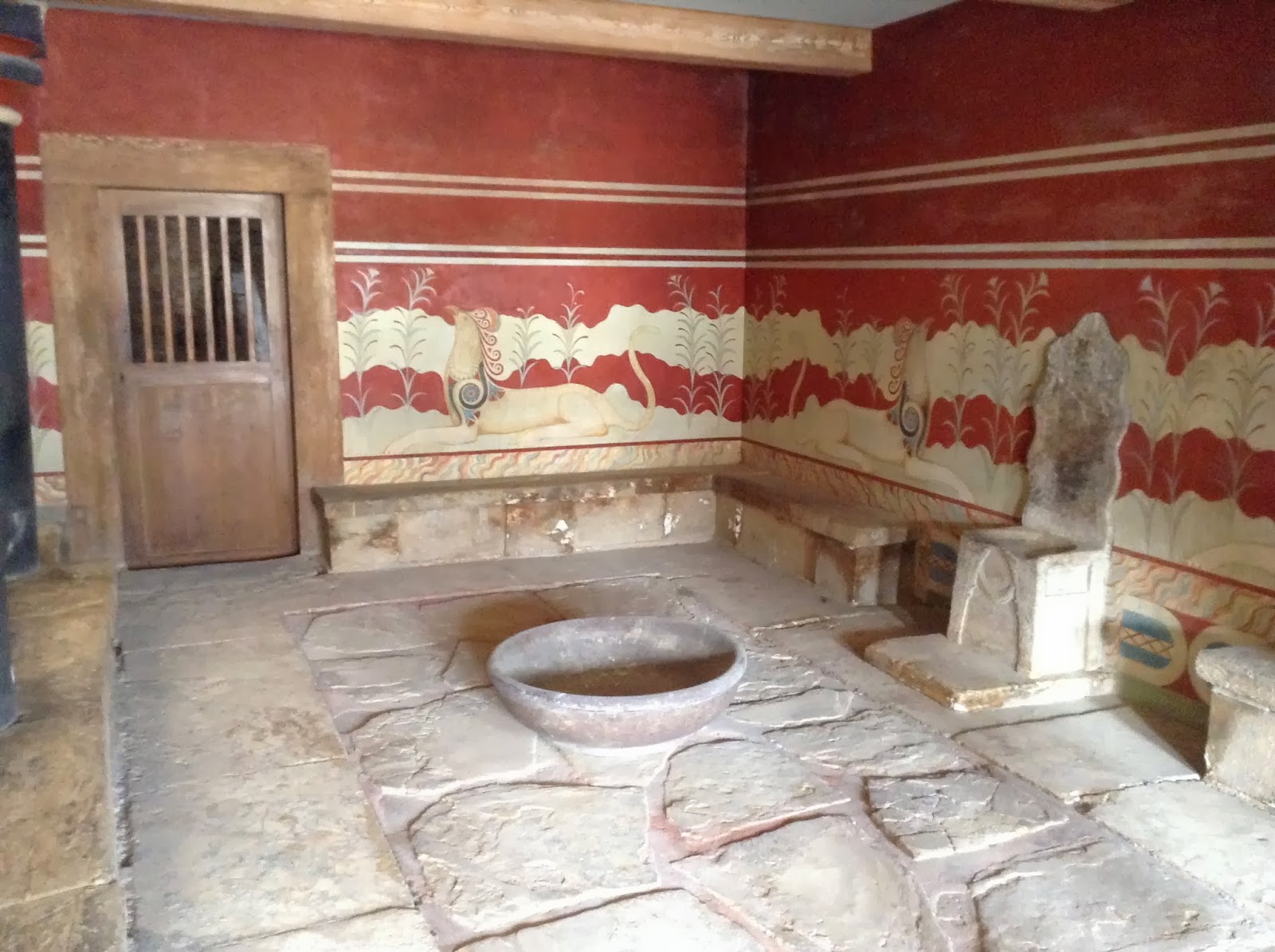The book - The Riddle of the Labyrinth: The Quest to Crack an Ancient Code by Margalit Fox.( Reviewed here in the New York Times.) The Labyrinth is Knossos, a fabulous Minoan palace on the island of Crete; the code is the ancient writing called Linear A and Linear B. I invite you to read the book and to do your own investigation starting with the links I've provided here. However, I must warn you to be careful. The subject is addictive.
We saved Knossos for the last part of our trip because I wanted to be sure I could keep it separate from the Acropolis in Athens and all the other ruins. I needn't have worried. This site is unique - not to be confused with any other.
Just briefly, Knossos was a forgotten ruins until it was unearthed in 1900 by Arthur Evans, a 48 year old British archaeologist (shamelessly posing with me in the picture just above). What he unearthed was the most important center of a sophisticated Bronze Age civilization which predated the Greek Classical Age by a thousand years. From 1850 to 1450 B.C. the people of Knossos amassed a legacy rich in plaster frescoes, huge highly decorated clay storage jars, sculpture, and stone friezes. They engineered plumbing including flush toilets, and light wells that brought illumination to every part of the palace. But even the carved alabaster throne was relegated to second place in view of rooms filled with clay tablets covered with writing. These are the earliest written records ever discovered in Europe. It was determined the tablets had been inscribed with a stylus when the clay was wet nearly seven hundred years before the Greek alphabet came into use.
The process of "cracking this code" was unbelievably intricate. The characters were unlike any known alphabet. There was no indication of what part of speech the individual characters represented. Was it whole words, syllables, or individual letters. Most amazing of all, the code crackers did not even know what language the alphabet represented. As so often is the case, it took a woman to figure it all out. Unfortunately, Alice Kober passed away before the final connections could be made, but thanks to this lovely book, her work is beautifully recorded.
The structure of Knossos is amazing. Over 1,500 rooms arranged on three or four floors built of limestone and schist, with wooden columns and wooden tie-beam.
This is the setting for the Minotaur myth.
Knossos as it may have looked at the peak of the Minoan civilization. Of course, it doesn't look like that now and when Arthur Evans appeared on the scene there was little indication of anything beyond piles of rock. Highly influenced by the work of Heinrich Schliemann and the discoveries he had made at Troy and other Mycenaean sites, Evans bought the Knossos site on the basis of Schliemann's belief in its importance. Evans had also come to believe that the symbols on certain stones found on Crete had real meaning beyond their decorative properties. The idea that Greek culture had sprung from nothing made no sense to him. He was determined that somewhere in the ancient times there had to be writing. He was right! His instinct led him to Knossos. Right again!
With his team, Evans worked on the Knossos site for 35 years until his death in 1941. Although his restoration work has been criticized by many, his imaginative efforts have breathed life into the rubble piles. Now, with a little effort, one can actually visualize how it all looked and how very splendid it was.
The following are a sample of the pictures I took on October 31, 2014
Most of the original furnishings and frescos that were found at the site have been moved to the Archaeological Museums in Heraklion and Athens. Those found on location are reproductions.
Excavation and restoration continues at the site. This has become a major project for Greek archaeologists.
Best Stanley pose of the day. The horns are one of the symbols of Knossos.
This guide got the prize for story telling. Her rendition of the Minotaur myth was outstanding. A little graphic perhaps, but laced with humor. She had her group spellbound and that includes the two of us as we listened in.
Lunch was waiting across the street. Domas and sour yogurt. Yum!





















